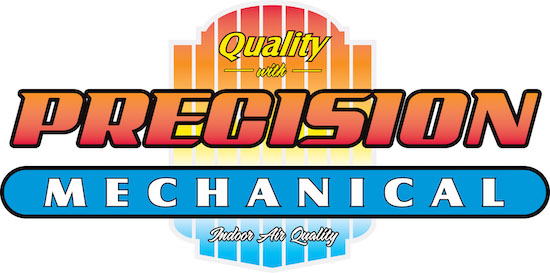
You shouldn’t be forced to sacrifice comfort or empty your wallet to keep your residence at a refreshing temperature during summer weather.
But what is the ideal temp, exactly? We discuss advice from energy experts so you can determine the best temp for your house.
Here’s what we suggest for the most energy-efficient setting for air conditioning in Rapid City.
Recommended Thermostat Settings for Summer
Most families find setting the thermostat at 72-73 degrees provides ideal comfort. However, if there’s a major difference between your inside and outside temperatures, your AC bills will be bigger.
These are our suggestions based on the U.S. Department of Energy (DOE) and ENERGY STAR®.
While at home: 78 degrees. While that sounds warm, there are ways you can keep your house pleasant without having the AC going constantly.
Keeping windows and blinds shut during the day keeps cool air where it should be—within your home. Some window coverings, like honeycomb shades or plantation shutters, are made to offer more insulation and improved energy conservation.
If you have ceiling fans in your house, the DOE says you can increase thermostat temperatures about 4 degrees higher without giving up comfort. That’s because they cool through a windchill effect. Because they cool people, not areas, switch them off when you leave a room.
If 78 degrees still feels too uncomfortable at first glance, try doing a trial for approximately a week. Get started by increasing your thermostat to 78 degrees while you’re at your house. Then, steadily lower it while using the tips above. You could be amazed at how comfortable you feel at a higher temperature setting.
While away: 88 degrees. There’s no reason to keep the air conditioning going all day while your home is unoccupied. Switching the temp 7–10 degrees warmer can save you an estimated 5–15% on your electricity costs, according to the DOE.
When you come home, don’t be tempted to put your thermostat under 78 to cool your house faster. This isn’t productive and usually produces a more expensive AC expense.
A programmable thermostat is a useful way to keep your temperature in check, but you need to set programs. If you don’t utilize programs, you risk forgetting to raise the set temperature when you go.
If you want a handy resolution, consider installing a smart thermostat. This thermostat links with your phone, so it is aware when you’re at your residence and when you’re away. Then it instinctively adjusts temperature settings for maximum savings. How much exactly? Typically $180 annually on heating and cooling, according to ENERGY STAR.
Another plus of installing a smart thermostat? You can use your phone to watch and adjust temperature settings from nearly anywhere.
While sleeping: Around 70 degrees. While ENERGY STAR recommends 82 degrees, that could be unpleasant for most families. Many people sleep better when their bedroom is cold, so that’s why the National Sleep Foundation recommends 60–67 degrees. But that might be too chilly, due to your clothing and blanket preference.
We suggest following a similar test over a week, moving your temp higher and gradually lowering it to find the right temperature for your residence. On mild nights, you may find keeping windows open at night and using a ceiling fan is a better option than using the air conditioning.
More Ways to Conserve Energy During Warm Weather
There are other ways you can save money on cooling bills throughout hot weather.
- Install an energy-efficient cooling system. Central air conditioners only work for about 12–15 years and become less efficient as they get older. A new air conditioner can keep your home cooler while keeping utility costs down.
- Set yearly air conditioner service. Routine air conditioner maintenance keeps your equipment running smoothly and might help it run at greater efficiency. It might also help prolong its life expectancy, since it allows pros to discover seemingly insignificant problems before they cause a major meltdown.
- Switch air filters often. Use manufacturer instructions for switching your air filter. A dirty filter can lead to your system short cycling, or run too much, and raise your cooling.
- Measure attic insulation levels. Nearly 90% of residences in the U.S. don’t have adequate insulation, according to the Insulation Institute. The majority of southern climates require 13–14” of attic insulation, while northern climates require 16–18”.
- Have your ductwork checked. Ductwork that has loosened over time can leak cold air into your attic, walls or crawl space. This can result in major comfort troubles in your home, including hot and cold spots.
- Seal cracks, doors and windows. Keep muggy air in its place by sealing holes. You can also caulk or weather strip doors to keep more cold air indoors.
Save More Energy This Summer with Precision Mechanical
If you are looking to use less energy during warm weather, our Precision Mechanical professionals can assist you. Reach us at 605-206-3766 or contact us online for extra information about our energy-saving cooling solutions.













